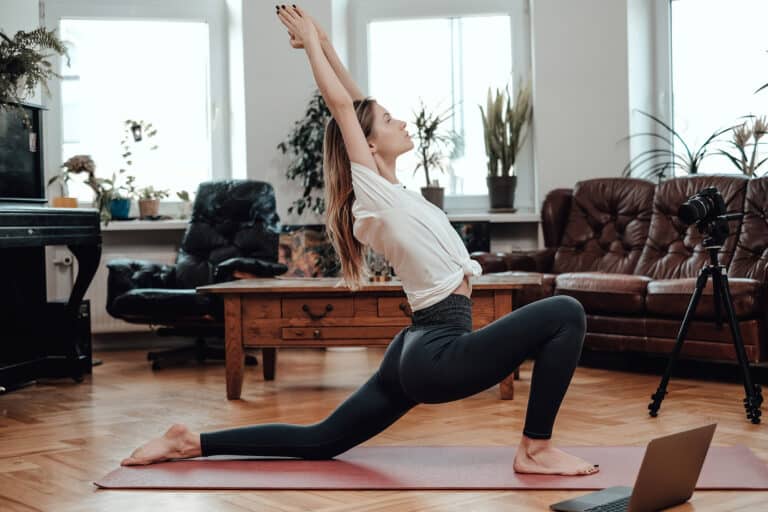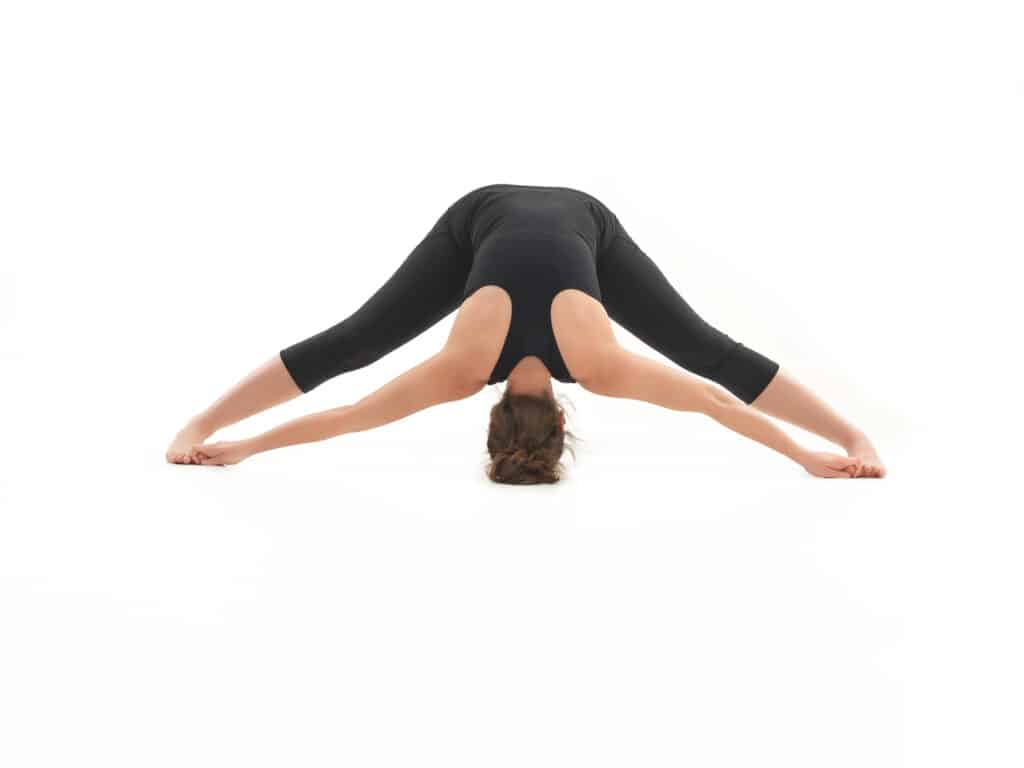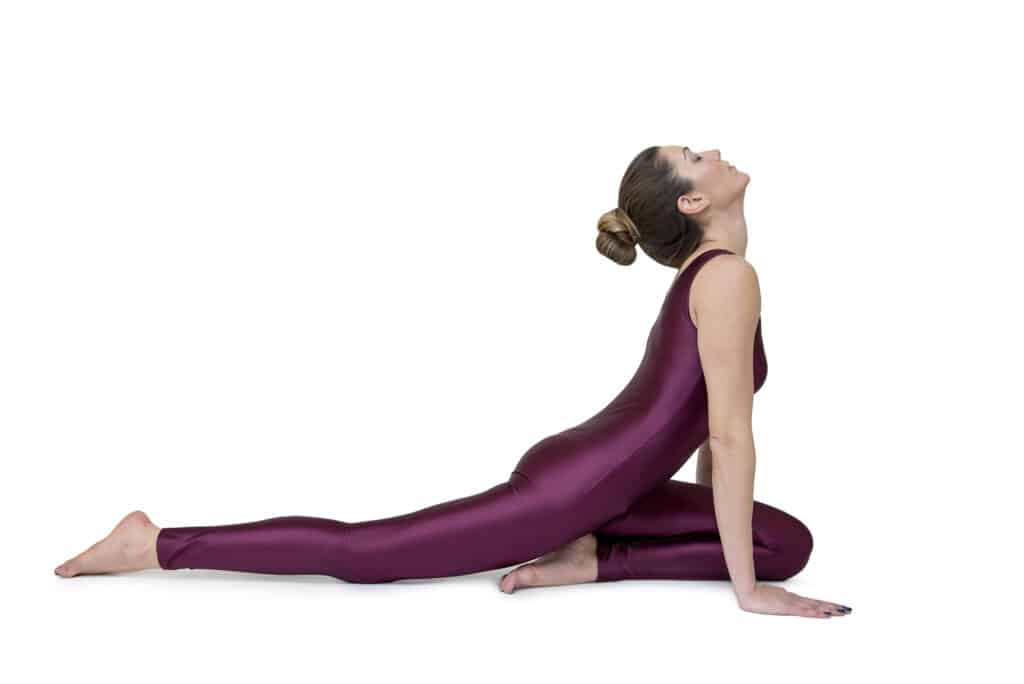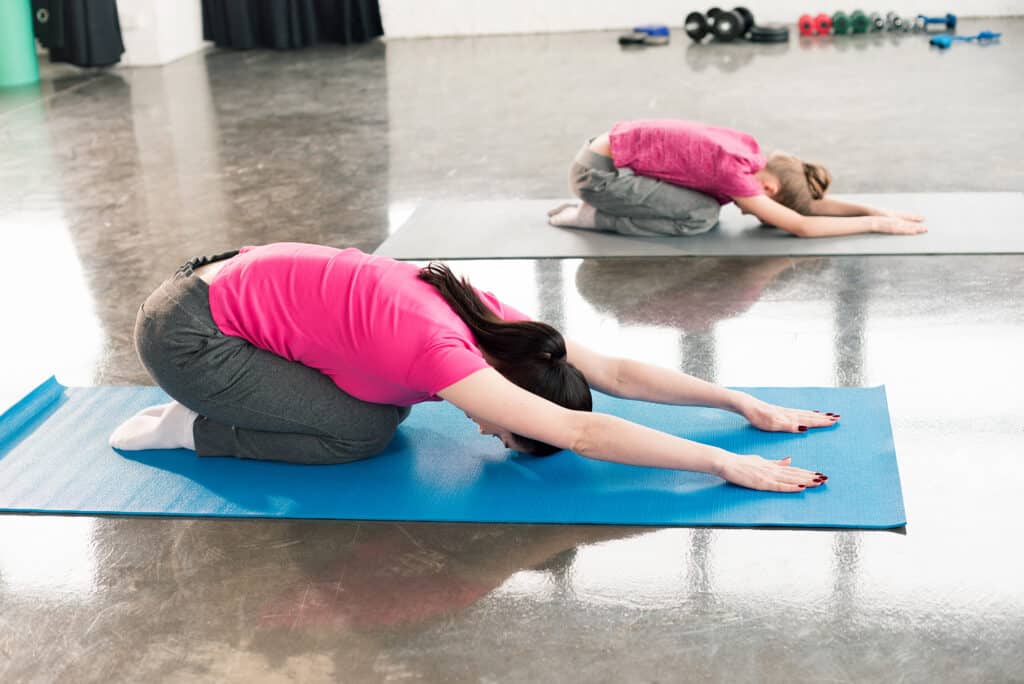


Are you a runner looking for a way to improve your performance, reduce the risk of injury, and speed up recovery?
In this blog post, we’ll explore the benefits of cool down yoga for runners, how often you should practice, and the right balance between yoga and strength training. We’ll also discuss how yoga can help with runner’s knee and provide some stretches to try out. So, grab your yoga mat and let’s dive right in!
Yoga is often associated with improved flexibility, but its benefits extend far beyond that. It is a holistic practice that harmonises the body, mind, and spirit, offering a multitude of physical and mental health advantages. Specifically for runners, there are numerous benefits to be gained, including:
Running can cause tightness in key muscles like the hamstrings, hips, and quads. Yoga offers a solution by stretching and lengthening these muscles, promoting improved flexibility and range of motion. Since running is a high-impact exercise, particularly when done at speed or on hard surfaces, it places significant strain on the joints. As a result, runners often experience tightness in areas such as the hamstrings, hip flexors, and calves. Yoga addresses this issue by stretching and strengthening the muscles within this range, alleviating tightness and enhancing overall flexibility.
Yoga incorporates deep, rhythmic breathing, which plays a vital role in running. By learning to control your breath through yoga, you can maintain optimal oxygen levels while running. Many people are unaware of how to breathe optimally, often favouring chest breathing over diaphragmatic breathing. This improper breathing technique can lead to increased anxiety and a sense of breathlessness. Furthermore, it weakens the diaphragm over time, limiting oxygen intake during running. Mastering breath control can enhance your running performance, improving pace, distance, and overall enjoyment of your run.
Running is not just about physical endurance; it’s a mental challenge as well. Yoga serves as a powerful tool to cultivate mental resilience. By learning to remain calm in difficult poses, yogis develop the ability to stay focused and composed during long-distance runs. Mindfulness and meditation play a significant role in yoga, enabling practitioners to turn inward and enhance mental clarity and resilience. This practice trains the mind to remain calm even when facing external stressors. For runners, this skill is invaluable. It helps maintain composure, stay focused during runs, and overcome discomfort, whether it’s aiming for a personal best or pushing through longer distances.

Yoga plays a crucial role in recovery as it enhances blood circulation to the muscles, resulting in reduced inflammation, accelerated healing, and alleviated soreness. Incorporating yoga into your post-running routine aids in a more efficient recovery by effectively cooling down the muscles, supplying oxygen and nutrient-rich blood to them, and preventing tightness.
Enhanced flexibility and range of motion, as previously mentioned, play a vital role in minimising the risk of injuries. Moreover, yoga contributes to improving balance and overall body awareness, thereby reducing the chances of accidents during running. Weak and tight muscles are more susceptible to injuries, whether caused by running or everyday activities. Yoga effectively addresses these muscular imbalances by stretching and strengthening weak and tight muscles. By enhancing mobility and flexibility, yoga enables the body to move more efficiently, thus reducing the likelihood of strains and preventing injuries altogether.
To maintain flexibility, strength, and mental resilience, it is recommended to include yoga in your cool-down routine 2-3 times a week. This frequency allows for ample cross-training opportunities while considering factors such as running volume, intensity, and personal goals.
If you aim to improve flexibility and address muscular imbalances for better running performance, practising yoga at least twice a week will yield noticeable benefits. Consider incorporating yoga on rest days to enhance mobility and aid in recovery.
For those seeking mental clarity and mindfulness or desiring to enhance flexibility, even a mere 10 minutes of daily yoga can make a significant impact. You may even opt for 10 minutes of dynamic yoga, such as hatha or vinyasa, to warm up your muscles before running, followed by a 10-20 minute yoga session as a cooldown after your run.
Both yoga and strength training play a vital role in a runner’s routine. Strength training helps build muscle, supporting joints and minimising the risk of injury. Meanwhile, yoga enhances flexibility and balance, facilitating smooth and efficient movement during runs.
To strike the perfect balance, it’s recommended to alternate between yoga sessions and strength training workouts in your weekly training plan. While yoga offers numerous physical benefits, it’s equally important for runners to incorporate strength training into their regular routine. These practices complement each other exceptionally well and can enhance your overall performance.
To maintain a well-rounded fitness routine, it is recommended to include at least two full-body strength workouts per week. You have the flexibility to integrate these workouts with your yoga practice. For instance, you can utilise yoga as a warm-up or cool-down before and after strength training. Alternatively, you can allocate 30 minutes for strength training followed by 30 minutes of yoga. Another option is to alternate between your running sessions, strength workouts, and yoga sessions on different days. This approach ensures a balanced and varied approach to your fitness journey.
Indeed! A common affliction within the running community, runner’s knee manifests as pain around the kneecap due to repetitive stress. While rest is typically prescribed as a treatment, it merely addresses the symptoms, not the root cause.
Yoga provides an incredible solution for strengthening the muscles around the knees, offering them ample support and stability. By focusing on poses that target the hips, quads, and hamstrings, we can effectively alleviate the strain on the knee joints, mitigating the risk of developing runner’s knee.
Poses such as Warrior II, Bridge, and Chair work wonders in strengthening the quad and glute muscles, providing superior support to the knee joint. Furthermore, hip-opening poses like Pigeon aid in releasing tension in the hips, thereby alleviating strain on the knees during runs.
Incorporating post-run yoga into your routine is an excellent way to alleviate tight muscles. Stretching plays a crucial role in enhancing your recovery process by increasing blood flow to your working muscles, supplying essential nutrients, and eliminating waste products like lactic acid. By doing so, you’ll experience reduced tightness, soreness, and tenderness the following day. Whether you join a class or participate in online workouts, both options provide opportunities to practise a variety of poses and flows, making it easier to get started. For runners in search of effective cool-down yoga stretches, consider integrating these exercises into your daily regimen:
Wide-leg forward fold – stretches hamstrings, calves and hips

This pose stretches the back of your legs and is great for runners whose hamstrings are often tight. Stand with your feet wider than hip-width apart, bend forward from your hips, keeping your back straight until you can touch the ground or hold onto something for support. Be sure to keep your knees slightly bent if necessary.
Pigeon pose – targets glues, hips and piriformis muscles

This pose stretches the outer hip and piriformis muscles, which can become tight from running. Start on all fours with your hands directly under your shoulders and knees under your hips. Bring one knee forward towards your hand, aiming to get it parallel to the front of your mat or as close as possible. Keep your back leg extended behind you and try to keep both hips level. Hold for a few breaths then switch sides.
Downward dog – stretches the hamstrings and calves, while providing a gentle inversion.

Downward facing dog is a great pose for runners as it stretches the hamstrings and calves, two areas that are particularly challenging for runners, while building strength in the shoulders. Remember, it’s more important for your spine to be neutral than your legs straight and heels on the floor. If you find your lower back rounding, take a slight bend in the knees. Over time, they will straighten. If you would like an extra dynamic stretch, you can always ‘walk the dog’ and peddle your legs side to side one at a time to release on each side.
Lizard pose – targets the hip flexors and inner groin muscles.
This stretch is also a great option for runners who may have tight hip flexors. While in a high lunge position with your right foot forward, lower both hands to the inside of that foot. Keep your hips low and gently press out towards the sides of your mat. Hold for 30 seconds before switching sides.
Knee to chest – stretches the glutes and lower back.

Lie on your back with both legs extended. Pull one leg in towards your chest, keeping the other leg straight on the ground. Hold for 30 seconds and then switch sides. This pose helps release tension in the glutes and lower back, areas that can become tight from long runs or intense workouts.
Legs up the wall – stretches the hamstrings, calves and lower back while providing a gentle inversion.

To get into this pose, sit close to the wall with your hips touching it. Lay down on your back, then extend your legs up towards the ceiling and relax them against the wall. Stay here for at least five minutes – you can always stay longer if you have time! This pose helps to bring blood flow back to your legs, allowing them to fully recover after a run. Plus, the inversion is great for restorative purposes and can help alleviate any swelling in the feet and ankles.
Child’s pose – provides a gentle stretch for the lower back and quads, while calming the mind.

Start by sitting on your heels with your knees together. Slowly walk your hands forward and lower your chest towards the ground, while keeping your arms extended in front of you. Rest your forehead on the ground or a block for support if needed. Stay here for at least five breaths, focusing on deep breathing and releasing any tension in the body.
With all these benefits, it’s clear that incorporating cool-down yoga into your running routine is a great idea! Why not give it a try and see how it impacts your running performance, recovery, and overall well-being? Join a local yoga studio or follow an online class tailored specifically for runners.
Namaste!
Join our mailing list to stay up to date with the latest UK running events, training tips, and exclusive offers on running products. Rest assured, we value your privacy and would never dream of selling your address. Sign up now…
Share this article
Running is an excellent form of exercise that can benefit your cardiovascular health, strengthen your...
An Achilles Tendinopathy or Tendonitis is a structural change to the tendon that attaches the...
What is Pilates? While there are many different styles of Pilates, fundamentally, it is all...
Do you ever experience tight or stiff muscles after your runs? Or do you encounter...
Running offers a remarkable opportunity to enhance cardiovascular fitness, boost stamina, and alleviate stress. However,...
Hip injuries in runners are often a result of intrinsic and extrinsic factors that challenge...
We’re here to make sure you’re up-to-date with the latest running tips, events and product discounts – we’ve always got your back! Rest assured, we value your privacy and would never dream of selling your address.
BONUS: Sign up today and receive a FREE code for our Sub-4-Hour Marathon Plan